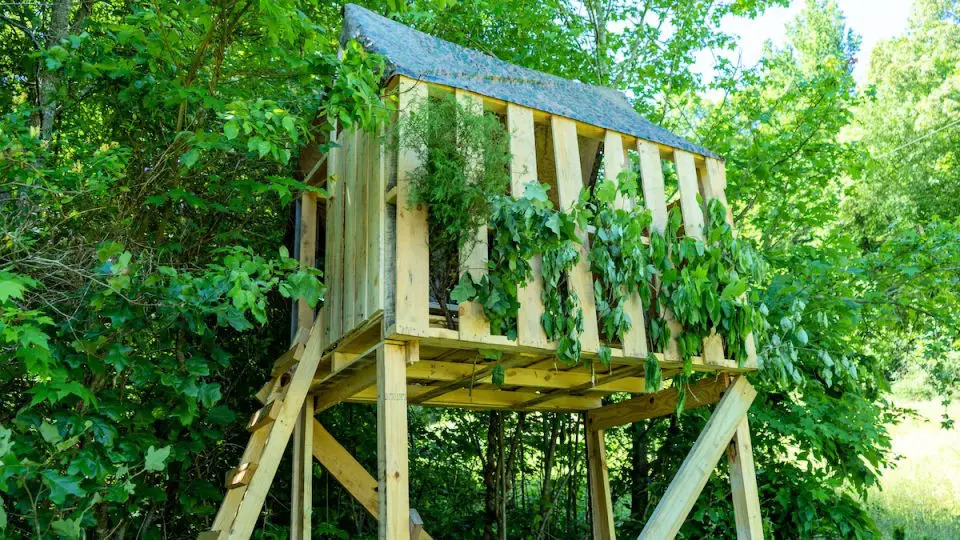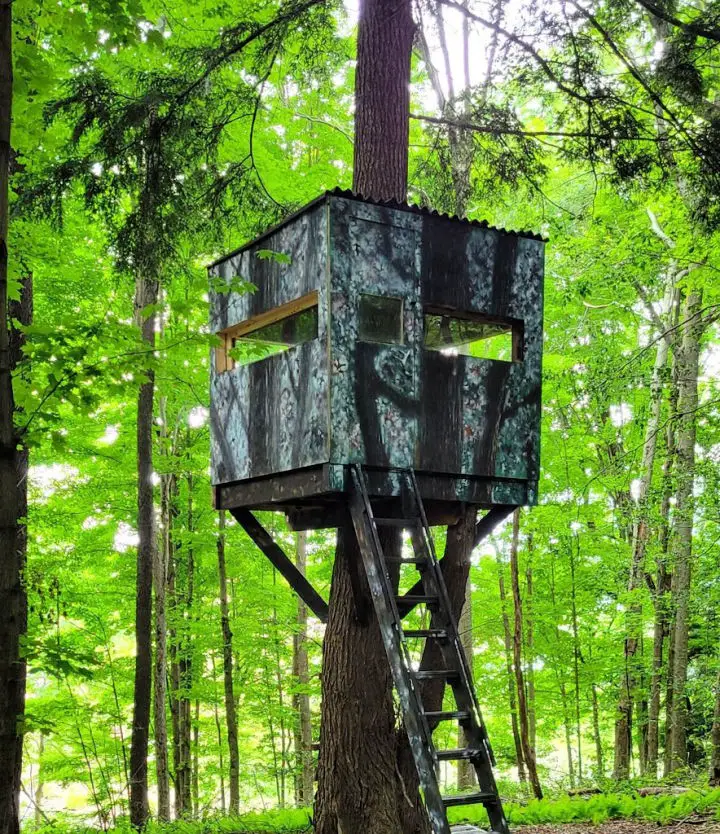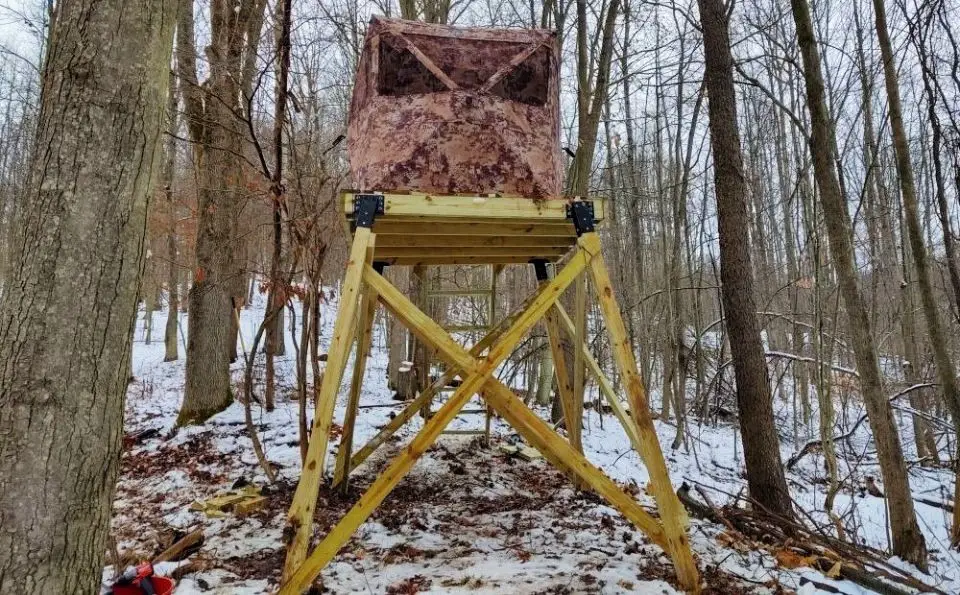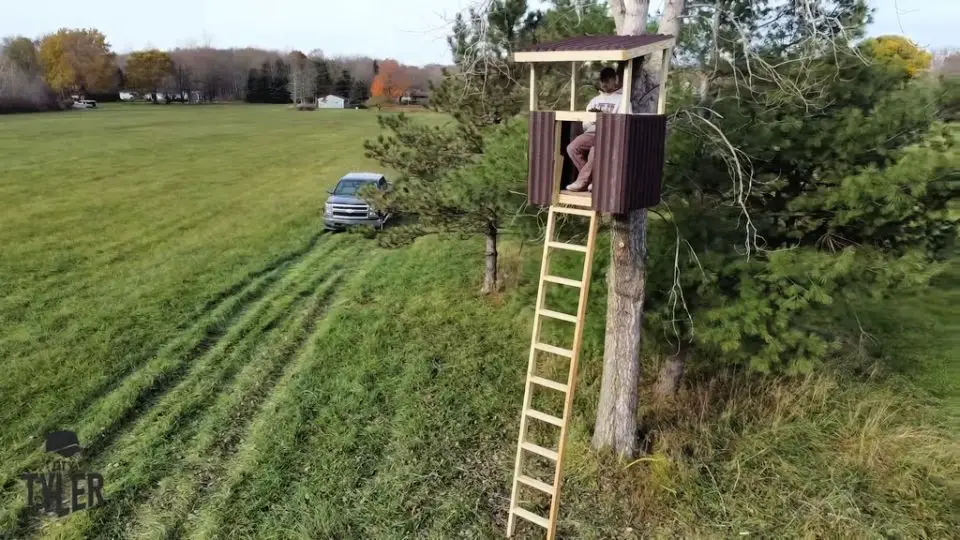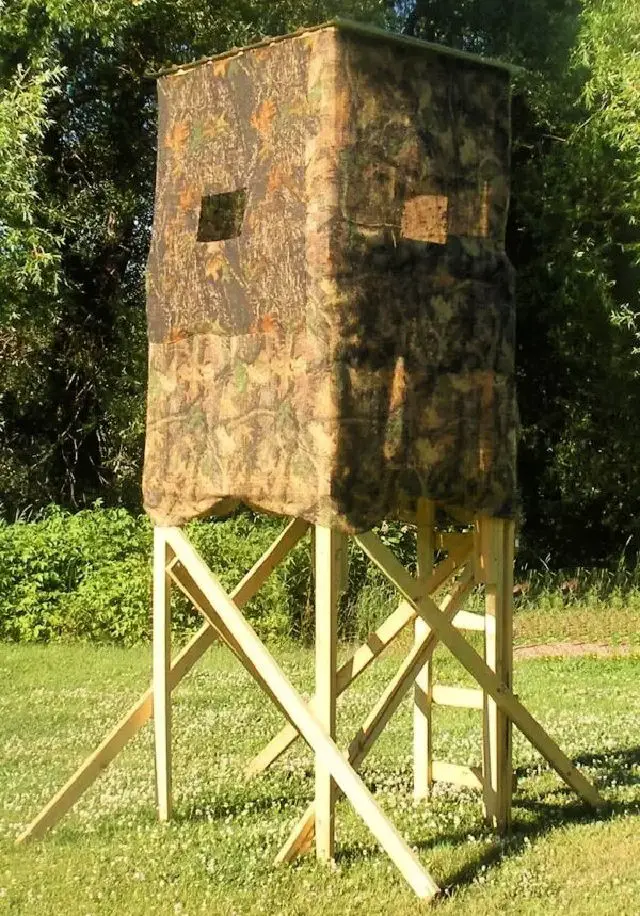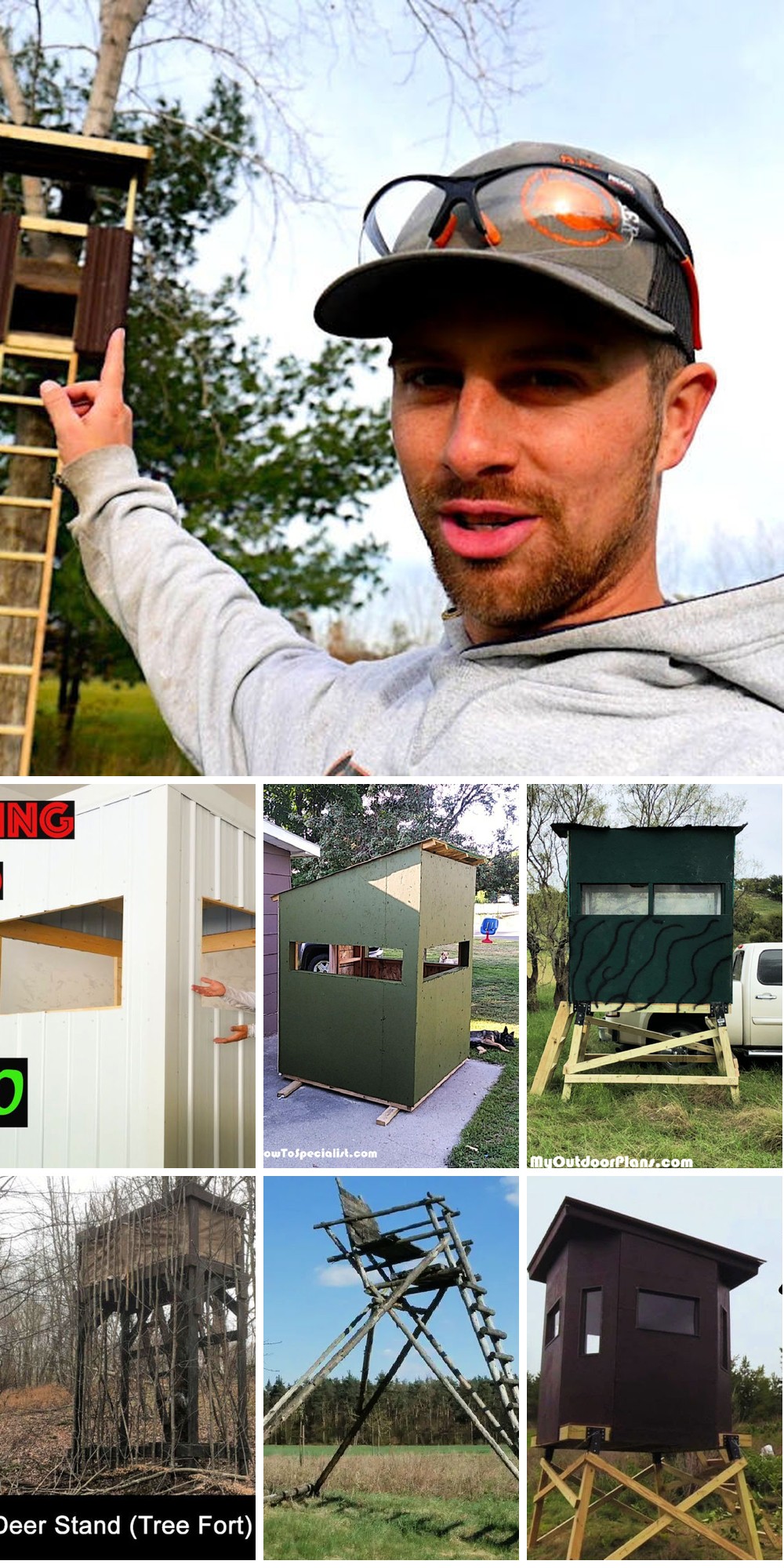
Constructing a DIY deer blind is an exhilarating endeavor for any enthusiastic hunter. Our comprehensive guide features 25 meticulously designed plans, each carefully crafted to accommodate diverse landscapes and hunting styles. By following our step-by-step instructions, you’ll be able to build a secure and effective hunting spot that not only elevates your experience but also prioritizes safety and comfort in the great outdoors. From preparing the groundwork to framing the structure, and concluding with customization options, every stage is engineered to yield a flawless hunting hideout. Our guide stresses the significance of a solid foundation, offering actionable insights on optimizing visibility and ensuring structural integrity. With these plans, you’ll be well-prepared to embark on this rewarding project, which promises to revolutionize your hunting excursions.
How to Make a Deer Stand – Step by Step Guide
To elevate your hunting experience without breaking the bank, consider building a cost-effective, fragrance-free, and robust deer stand that suits both bow and gun hunters. By following these straightforward, adaptable, and dependable steps, you can create a DIY masterpiece that caters to all skill levels, ensuring a reliable and effective hunting setup.
Step by Step Instructions
Step 1: Prepare Your Materials
To get started, you’ll need to gather a range of materials. This includes a 4×8 sheet of 5/8-inch treated plywood, which will form the foundation of your platform. You’ll also require treated 2×6 lumber for framing the platform itself, as well as treated 2×8 lumber for the steps. To ensure stability and prevent movement over time, you’ll need 4×4 posts and post mounts. For building the walls and windows, you’ll use two-by-twos. The exterior of your structure will be clad in composite metal siding. In addition to these materials, you’ll also need screws with rubber washers to create a weather-tight seal, as well as concrete to secure the 4×4 posts in place. One important consideration is to ensure that all the wood used is treated to resist the effects of harsh weather and decay.
Step 2: Build the Platform
Laying the foundation of your project requires careful planning and execution. Begin by constructing the base using plywood and treated 2x6s, carefully framing the perimeter. To ensure added stability, strategically place additional 2x6s across the center, allowing for optimal support throughout the structure.
Step 3: Attach Post Mounts
For added stability, 4×4 post mounts are strategically secured to each corner of the platform. By design, their factory-set angle naturally prevents straight vertical posts from occurring, ensuring a solid foundation for the structure.
Step 4: Frame the Walls
When it comes to framing out your walls using two-by-twos, start by defining the window areas at a height of approximately 36 inches. To ensure proper structural integrity, be sure to install studs every 16 inches above and below each window frame. Additionally, give your sidewalls a slight pitch to allow for efficient rainwater runoff and prevent water accumulation.
Step 5: Construct the Steps
To create sturdy stairs, begin by utilizing 2×8 treated lumber as the foundation. First, produce a template for the stringers to guarantee precise measurements. Then, cut the steps according to your design blueprint, fortifying each stringer with an outer layer for added strength. For easier installation later on, only attach the top, middle, and bottom steps initially.
Step 6: Set the Foundation
To create a solid base for your stand, you’ll need to prepare four five-gallon buckets of concrete. This mixture will be used to anchor the 4×4 posts approximately two feet deep into the ground, providing a rock-solid foundation that can withstand the elements and support the weight of your structure.
Step 7: Side with Composite Material
To complete the exterior cladding, begin by covering the framed walls with composite metal panels. To maximize efficiency and minimize waste, carefully cut the sheets to fit the unique shape of your structure. Ensure a watertight seal by securing the panels using screws equipped with rubber washers, providing an added layer of protection against the elements.
Step 8: Assemble and Secure the Stand
Assemble the structural foundation by setting up the base unit, ensuring it’s stable throughout the lifting process. Implement a framework of cross-bracing for added stability. Utilize a four-wheeled vehicle or a comparable option to elevate the base upright, followed by securing the walls and steps in place.
Step 9: Roof and Insulation
To ensure a seamless construction process, consider adding the roof prior to finishing the walls. This crucial step prevents potential issues that may arise if you complete the walls first. With the structure securely in place, take the time to address any cracks or gaps, effectively insulating your space and preserving warmth while keeping unwanted odors contained within.
Step 10: Customize Your View
When it comes to wrapping up your deer hunting preparations, one crucial aspect to focus on is trimming back shooting lanes in the direction of where deer tend to congregate. As you tailor this approach to your specific hunting grounds and personal preferences, be sure to consider any unique factors that might influence your strategy.
Video Tutorial
If you’re interested in learning how to construct an affordable deer stand, I recommend starting with a step-by-step video tutorial available on YouTube. This visual guide provides a clear and concise explanation of the process, complementing this written guide and making it easier to understand and replicate.
Customization Ideas for Your DIY Deer Blind
To elevate the hunting experience, crafting a customized deer blind tailored to individual requirements is crucial. By incorporating thoughtful design elements, hunters can create a space that balances comfort, functionality, and personality.
Choose the Right Camouflage
When designing a deer blind, it’s essential to prioritize camouflage to ensure seamless integration with its surroundings. To achieve this, consider incorporating natural materials such as branches, leaves, and grass native to the area. Additionally, opt for camouflage patterns that mirror the local flora, effectively blurring the distinction between the blind and its environment.
Enhance Comfort
When it comes to spending extended periods of time in a deer blind, prioritizing comfort can make all the difference. To create an optimal environment, consider the following essentials:
Ergonomic Seating: Invest in a chair or bench with cushioning and adjustable features to ensure your back and joints remain supported.
Insulation and Climate Control: Line the walls of your deer blind with insulation materials to regulate the temperature and keep you warm during colder months. This simple adjustment can greatly impact your overall comfort level.
Improve Visibility
Achieving the perfect balance of visibility and concealment is crucial in various scenarios. To attain this equilibrium, consider the following strategies:
Window Placement: Strategically position windows at varying heights to cater to both standing and sitting positions.
One-Way Mesh: Utilize one-way mesh to cover windows, allowing for unimpeded views while maintaining anonymity.
Storage Solutions
Crafting a well-designed deer blind not only enhances the overall hunting experience but also prioritizes functionality and organization. To achieve this, consider incorporating two essential features: shelving and gun racks. Shelving provides ample storage space for equipment, personal items, and other necessities, keeping them within easy reach. On the other hand, secure gun racks ensure that firearms are safely stowed while allowing for quick deployment when needed.
Weatherproofing
To ensure a successful hunting experience, it’s crucial to prioritize the durability of your DIY deer blind by implementing two essential measures: waterproofing and windproofing. Start by sealing any seams or gaps in the construction to prevent water from penetrating the structure. Additionally, opt for waterproof materials that can withstand harsh weather conditions. On the other hand, reinforce the blind’s framework to withstand strong winds and maintain its stability. By taking these steps, you’ll be able to enjoy a safe and comfortable hunting experience, tailored to your unique preferences.
Safety Tips for DIY Deer Blind Construction
To construct a secure DIY deer blind, prioritizing safety from the outset is crucial. This involves taking necessary precautions during both the building and usage phases. Firstly, establish a clear working area free from tripping hazards and obstructions. Ensure all power tools are properly maintained, and operators wear appropriate personal protective equipment (PPE) such as gloves and safety glasses. Furthermore, when handling lumber or other materials, exercise caution to avoid accidents. In terms of blind operation, consider installing a sturdy ladder for access and exit, while also positioning the structure in a way that minimizes visibility from the surrounding environment.
Handling Tools and Materials
When engaging in DIY projects or working with power tools, it’s crucial to prioritize your safety above all else. This includes donning essential protective gear at all times. Gloves will help shield your hands from cuts, abrasions, and other injuries, while goggles will protect your eyes from flying debris, sparks, and chemical splashes. Meanwhile, ear protection will safeguard your hearing by reducing the risk of noise-induced hearing loss. Additionally, maintaining a regular tool maintenance routine is vital to prevent accidents from happening in the first place. Keep your tools sharp and well-conditioned to minimize the likelihood of unexpected failures or malfunctions that could result in injuries. By following these simple yet crucial steps, you’ll be able to work with confidence, knowing that you’re taking proactive measures to protect yourself from harm.
Structural Stability
When it comes to building a deer blind, a solid foundation is crucial for ensuring stability and security. To achieve this, focus on using high-quality materials that can withstand the elements as well as the weight of your equipment or hunting gear. By prioritizing durability and strength, you’ll be able to construct a structure that can withstand the rigors of outdoor use.
Legal Considerations for Deer Blinds
Ensuring a seamless and enjoyable hunting trip demands staying abreast of relevant legal considerations. From understanding local regulations to complying with federal laws, having a solid grasp of the legal framework surrounding hunting can make all the difference in avoiding potential pitfalls.
Hunting Regulations
Before setting up a deer blind, it’s crucial to ensure compliance with local regulations by checking permits required for construction or usage. Additionally, familiarity with seasonal hunting restrictions is vital to avoid any potential issues. Hunters must respect these boundaries to guarantee a successful and legal experience.
Deer Blind Specifications
When it comes to setting up a deer blind, there are several key factors to consider. Firstly, you’ll need to be aware of any local regulations governing the size and height of blinds in your area. These rules can vary significantly depending on where you’re hunting, so it’s essential to do your research beforehand to avoid any issues. Additionally, make sure to select a location for your blind that is not only safe and accessible but also respectful of private property rights and protected areas. Before you start building, take the time to ensure that your chosen spot is free from any trespassing or environmental concerns.
Environmental Impact of DIY Deer Blinds
When constructing a deer blind, it’s essential to consider the environmental implications. However, by taking thoughtful measures, you can significantly reduce the ecological impact of your project.
Use Sustainable Materials
When it comes to giving your home a makeover, there are several eco-friendly options you can consider to reduce its environmental impact. One approach is to opt for materials that have been reclaimed or recycled from existing structures. This could include using recycled wood, metal, or even glass. Not only does this help conserve natural resources, but it also reduces the amount of waste sent to landfills and preserves the character of older buildings. Another important consideration is the type of paint you use. Conventional paints can release volatile organic compounds (VOCs) into the air, which can be harmful to both people and the environment. By choosing paints with low VOCs or those that are labeled as eco-friendly, you can minimize your home’s contribution to indoor air pollution and promote a healthier living space.
Preserve Natural Habitat
When setting up a deer blind, it’s essential to choose a location that minimizes disturbance to the surrounding wildlife. This can be achieved by selecting an area where the natural habitat is not disrupted. For instance, consider placing your blind near a thicket or a grove of trees, as these features tend to attract game animals without altering their natural behavior. Additionally, make sure to leave no trace behind after the hunting season. Remove any artificial materials you’ve added, such as camouflage netting or stakes, to maintain the integrity of the environment. This not only preserves the ecosystem but also ensures that future generations can enjoy the same hunting experience.
Maintenance and Upkeep of Your Deer Blind
While routine upkeep is crucial to extend the lifespan and ensure the security of your deer hunting blind, it’s essential to prioritize its care to guarantee a successful and enjoyable experience in the great outdoors.
Routine Checks
Before and after each season, conduct a thorough inspection of your blinds to identify any signs of damage or wear. This includes checking for cracks, gaps, or other openings that could compromise their structural integrity. Additionally, perform routine maintenance on your weatherproofing systems by reapplying sealants and addressing any leaks or gaps that may have developed over time.
Cleanliness
To ensure a healthy and pest-free environment, it’s essential to prioritize sanitation within the interior space. This involves regularly cleaning and maintaining the area to prevent the growth of mold and unwanted pests. Furthermore, effective waste management is crucial in keeping the surroundings clean and free from potential hazards. Proper disposal of any trash or waste ensures a tidy and organized environment.
FAQs About DIY Deer Blinds
For those looking to construct their own deer blind, a multitude of uncertainties often arise. To address these concerns, we’ve compiled answers to some of the most frequently asked questions regarding this process.
What materials do I need to build a deer blind?
When constructing your outdoor structure, it’s essential to have a solid foundation. This begins with selecting suitable materials for the frame, such as durable options like wood or metal that can withstand various environmental conditions. Additionally, you’ll require fastening elements like screws or nails to securely assemble the frame. Furthermore, don’t forget to factor in camouflage material to effectively blend your structure with its surroundings, ensuring it seamlessly integrates into the natural environment.
How do I choose the best location for my deer blind?
When setting up your hunting gear, identify a vantage point that provides an unobstructed view of the path frequented by deer. It’s essential to position yourself downwind from the area to minimize any lingering scents and keep your presence undetected.
What tools are required for constructing a deer blind?
When it comes to DIY window treatments, having the right basic tools at your disposal can make all the difference. These essentials typically include a versatile power tool like a saw, hammer or drill, as well as a measuring tape to ensure precise measurements. Additionally, having access to a sturdy ladder for elevated blinds can be particularly useful when working with taller windows.
How can I make my deer blind comfortable for long waits?
When planning your hunting blind or shelter, consider investing in comfort-enhancing features that will make the experience more enjoyable. This can include incorporating cushioned seating to provide a comfortable resting spot. Additionally, think about adding insulation to keep you warm during chilly hunts. For cold weather excursions, a small heater may be just what you need to stay cozy and focused on your target.
Is it necessary to camouflage a deer blind?
Strategically concealing your hunting blind through camouflage techniques enables a seamless integration with its surroundings, thereby minimizing its visibility to deer and increasing the effectiveness of your hunt.
Can I build a deer blind on public land?
When considering a project that involves construction on public land, it’s crucial to factor in local regulations and obtain necessary approvals. This typically requires consulting with relevant authorities to ensure compliance with existing laws and guidelines.
How large should the windows be in a deer blind?
When it comes to the size of your Windows, finding a balance between visibility and concealment is crucial. Ideally, they should be substantial enough to provide an unobstructed view, but not so large that you become an open target. Adjustable covers can prove to be a valuable asset in this regard, as they allow for flexibility and the ability to adapt to changing circumstances.
What is the best height for an elevated deer blind?
When it comes to spotting deer from a distance, finding the sweet spot can be crucial. Typically, elevating yourself between 10 to 15 feet above the ground offers an ideal viewing angle, allowing you to remain hidden from their keen senses while still getting a great view of your quarry. This mid-level perch strikes a balance between observing deer behavior and avoiding detection, making it an effective starting point for any hunting or wildlife-watching endeavor.
How can I ensure my deer blind is safe?
When inspecting your structure, give special attention to elevated components and ensure that all materials are in a stable and satisfactory state.
What are some legal considerations I should be aware of?
Before constructing and utilizing a deer blind, it’s essential to familiarize yourself with local hunting regulations, property lines, and any necessary permits or restrictions. A thorough understanding of these factors will help ensure a smooth and compliant setup process.
25 DIY Deer Blind Plans to Build a Safe Hunting Spot
Transform your hunting experience with 25 comprehensive DIY deer blind plans, designed to provide a secure and effective vantage point. With clear, step-by-step guidance, you’ll be able to construct your own deer blind and elevate your hunting prowess.
DIY Elevated Deer Hunting Blind Under $500
Elevate your DIY deer hunting experience with a custom-built, elevated stand that offers unparalleled visibility and protection from the elements. This innovative project requires only basic tools and materials readily available at your local home improvement store. The best part? It’s remarkably budget-friendly, allowing you to complete this project on a weekend for under $500.
This compact yet sturdy blind is designed to blend functionality with portability, easily fitting into the bed of a standard full-size pickup truck – specifically tailored for an F-150. With dimensions carefully crafted to accommodate two people, it’s the perfect hideaway for a successful pre-dawn hunt even in sub-zero temperatures.
With its rugged appeal and ability to withstand harsh weather conditions, this DIY deer blind is the ultimate game-changer for your outdoor adventures.
How to Make Deer Blind From Pallets
Transforming your hunting experiences without breaking the bank is entirely possible with a DIY box blind built from affordable materials. By repurposing pallets, 4x4s or 2x4s, exterior grade screws, and a tarp, you can create a sturdy, modular structure that’s perfect for a day in the woods. What’s more, this project requires only basic tools like a drill, sawzall, and tape measure, making it an accessible and fun activity for the whole family to participate in. Your kids can even get creative by sketching out the plan, fostering a sense of ownership and excitement for the project. From gathering materials to setting up the structure, this step-by-step guide ensures that anyone with some initiative can build their box blind. The end result is not only a functional hunting blind but also a meaningful way to spend quality time with your loved ones, creating lasting memories.
How to Build a Mobile Deer Blind
Bring your creative spirit to life by crafting a one-of-a-kind mobile deer blind using readily available farm running gear. This innovative project begins with the construction of a sturdy 4×4 frame, reinforced with a solid 2×6 floor and 3/4 inch plywood subfloor. A harmonious blend of green-treated and standard materials comes together to form this unique structure, featuring angled corner walls, expansive bow windows, and sliding horizontal openings that provide an unparalleled viewing experience.
What sets this mobile deer blind apart is its clever use of cost-effective design elements, including a versatile door with a dual-purpose handle for added security and noise-dampening acoustic foam panels. Feel free to get creative and personalize your project with paint or other artistic touches, just like adding the finishing touches to a masterpiece.
The end result is a fully functional, transportable deer blind that offers an exceptional view from within, further enhanced by magnetic window screens and a blackout curtain. This engaging DIY project is perfect for both adults and kids, inviting everyone to join in on the fun and get their hands dirty. Whether you’re a seasoned DIY enthusiast or just looking for a new adventure, this mobile deer blind is sure to be a hit.
Homemade Tree Stand Blind
Crafting a DIY deer blind is an exciting outdoor project that offers a unique way to connect with nature. This comprehensive guide will walk you through building a 6′ x 6′ structure that provides a comfortable and sheltered view for deer watching. The result is a cost-effective and rewarding experience that combines planning, assembling, and finishing to create a stable and long-lasting blind. To start, gather your materials, including treated timber, decking boards, plywood panels, corrugated red asphalt roof panels, metal brackets, PVC pipes, and assorted hardware. Don’t forget to add a touch of camouflage with some spray paint to blend the blind seamlessly into its surroundings. Each step of the building process is outlined clearly, ensuring a smooth construction journey from crafting the platform and frame to installing a sturdy ladder and comfortable seating. As you work on your DIY deer stand blind, you’ll be able to enjoy the tranquility of nature in a unique and purposeful addition to your outdoor space. So why not gather your tools and embark on this nature-oriented project? With the right materials and guidance, you’ll be able to witness the harmony and allure of the wild from the comfort of your very own deer stand blind.
Building Your Own Platform Deer Stand
As you gaze out at your rural surroundings from your very own DIY deer stand, the thrill of observing wildlife in its natural habitat is unmatched. Constructed to withstand the elements and provide a unique vantage point, this project utilizes sturdy dimensional lumber and a cordless hammer drill and impact driver combo kit to build a safe and secure platform. From colorful birds to majestic deer, explore your property’s diverse wildlife all from your homemade perch.
The foundation of any successful deer stand is a solid structure built on 2×6 pressure-treated lumber. With precision and balance in mind, the framework is further reinforced with Timberlake screws, made effortless by the robust tools from the Milwaukee M18 FUEL line.
This project proves to be an exhilarating endeavor, offering not only a means of observing wildlife but also a functional structure for seasonal hunting. Before embarking on this project, it’s essential to comply with local zoning laws and building codes for safety. So gear up, engage with the outdoors, and create a lasting symbol of your love for nature with your deer stand.
Inexpensive DIY Hunting Blind
Mastering the art of crafting DIY hunting blinds is a crucial aspect of a successful hunting season. By concealing hunters from their prey, these structures enable a more effective hunt. This project delves into three distinct designs – the box stand, the hay bale blind, and the natural blind. With each design meticulously explained, you’ll gain insight into the required materials, cost, and step-by-step construction instructions. The box stand, an elaborate structure capable of accommodating two people, demands treated lumber, plywood, and corrugated tin sheets, with a budget ranging from $100 to $300. In contrast, the hay bale blind is a more straightforward approach, utilizing existing hay bales in a field to camouflage the hunter, requiring a minimal investment of approximately $100. The natural blind takes it a step further by capitalizing on surrounding vegetation, offering a cost-free solution. Building hunting blinds not only adds utility but also fosters a deeper connection with nature. This budget-friendly guide empowers you to uphold the time-honored tradition of hunting while prioritizing safety and comfort.
Making Your Own 5×5 Deer Blind
Transform your hunting experience with a DIY 5×5 deer blind project, boasting an impressive combination of durability, affordability, and ease of construction. By leveraging sturdy 2×4 framing, painted oriented strand board (OSB) for walls, and lightweight steel roofing, you’ll create a reliable and budget-friendly deer blind that won’t break the bank – with a total construction cost of around $300. This project’s moderate difficulty level makes it accessible to everyone, allowing you to demonstrate your skills while reaping the benefits of a custom-made deer blind perfect for your next hunting adventure.
How to Make a Deer Stand at Home
For an elevated DIY deer stand that provides unparalleled views from 17 feet up, look no further than this comprehensive guide. This hands-on project combines practicality with comfort and concealment options like a blind and roof, making it the perfect addition to your hunting setup.
You’ll work with readily available materials like 16-foot 2x4s and a nail gun to construct the ladder and frame, ensuring a secure and functional stand. With precision measurements, cutting, and assembly, you’ll attach the ladder to the frame, reinforce the structure, and add the roof and side panels.
Two design options are available: a straightforward single deer stand or a slightly more complex double deer stand, catering to your specific hunting needs. By harnessing your craftsmanship, you can create this innovative deer stand and take your hunting experience to new heights.
Free Wooden Deer Stand Plan
A DIY deer blind is a game-changer for any hunter seeking an affordable and portable way to get up close and personal with their prey. With these easy-to-follow plans, you can create your own homemade box deer stand that prioritizes stability, ease of assembly, and optimal concealment. At just 6 feet off the ground, this 4’x4′ platform is built using sturdy 2x4s and topped with a roof for added shelter from the elements. What’s more, you can customize your stand to fit your unique hunting needs by adding as many shooting windows as you desire at your preferred height. The best part? This DIY project is incredibly portable – just load it into the back of your truck and assemble it on-site using a single ratchet wrench. If you have multiple hunting locations on your property, this cost-effective solution is estimated to cost around $150, making it a more affordable alternative to commercial options. So why wait? Gather your tools, source your materials, and start building your ultimate hunting vantage point today!
How to Make a Deer Stand
Create a mobile and practical DIY deer stand that elevates your hunting experience. This comprehensive guide will walk you through building a sturdy and weather-resistant structure using cedar, pine, or redwood lumber, accompanied by plywood components. The design comprises a floor, sides, front face, back face, and roof, providing a secure and comfortable perch for your hunting excursions.
Follow the step-by-step instructions to ensure precise measurement, cutting, and assembly of each component. Don’t forget to drill pilot holes for a snug fit and right-angled corners for a professional finish.
The structure’s modular design allows for easy disassembly and relocation, allowing you to adapt to changing wildlife patterns. The stand’s portability is its crowning feature, empowering you to adjust your hunting strategy on the fly. Transform your outdoor experience with our free deer stand plans today.
8 X 8 Hexagonal Bow Deer Blind Building Plans
Transform your outdoor excursions with this easy-to-build DIY hunting hideaway guide! The goal is to create a spacious structure that comfortably accommodates a family and can be transported for assembly in a garage. To achieve this, you’ll need 2x4s, 4x4s, 1/2-inch plywood, gate hinges, blind windows, paint, and blind platform brackets. Start by constructing an 8×8 foot base using the platform brackets. Then, build individual panels for the front and sides, attaching them to the platform and securing them to each other. Next, create an ‘L’ shaped frame for the rear wall and ceiling joists. Cut out a door opening, attach the roof, add shingles, and finish with a coat of paint. This versatile hunting blind will enhance your outdoor experiences, providing a practical and enjoyable feature for your next adventure.
How to Make Your Own 4×6 Elevated Deer Blind
Transform your outdoor experience with a hands-on DIY project that brings families together – a 4×6 elevated deer blind! This rewarding endeavor requires minimal specialized tools, such as a hammer, saw, and drill, and yields a sturdy structure with optimal viewing angles. The design incorporates transparent Plexiglass windows for unobstructed visibility while maintaining the shelter’s functionality.
The unique features of this deer blind include window dividers on each 6-foot side, allowing you to personalize your viewing experience. As you work together to construct this elevated hideaway, you’ll develop valuable woodworking skills and create lasting memories with your loved ones.
Beyond its practical benefits, the finished product becomes an ideal spot for wildlife observation, capturing those fleeting deer moments like never before. So, gather your tools and embark on a fun-filled adventure of building today!
Build a Ladder Stand for Deer Hunting
Building a DIY ladder stand for deer hunting requires creativity and attention to detail. By constructing one yourself, you can enjoy cost savings, customization, and an unparalleled view of the surrounding area. This comprehensive guide takes you through six essential steps, from selecting the ideal tree to testing the final setup. To get started, gather materials such as 2×4 inch treated lumber or cedar beams, plywood for the seat, and a range of tools. While a ladder stand is more than just an impressive feat, it’s also a vital tool for hunting, offering unparalleled visibility and camouflage capabilities. However, safety must always be your top priority; use a safety harness at all times and conduct regular inspections to ensure the tree remains stable. With this guide, you’ll be well on your way to a rewarding and successful deer hunting experience.
Small Deer Stand Design
Crafting an unforgettable hunting experience requires more than just setting up camp – it demands a thoughtful and well-designed deer stand. Fortunately, creating a DIY small deer stand is a feasible project that can be completed within three days for approximately $250. This user-friendly task is perfect for nature enthusiasts of all skill levels, providing a tangible sense of accomplishment and a satisfying creative outlet.
The finished product not only serves as a functional hunting platform but also showcases one’s woodworking prowess to friends and family. By following the provided project plan, even novice woodworkers can navigate the process with ease and confidence.
Whether you’re a seasoned hunter or simply looking for a fun DIY challenge, building your own deer stand is an excellent way to enhance your hunting experience while honing your skills as a craftsman.
Build Your Own Deer Stand
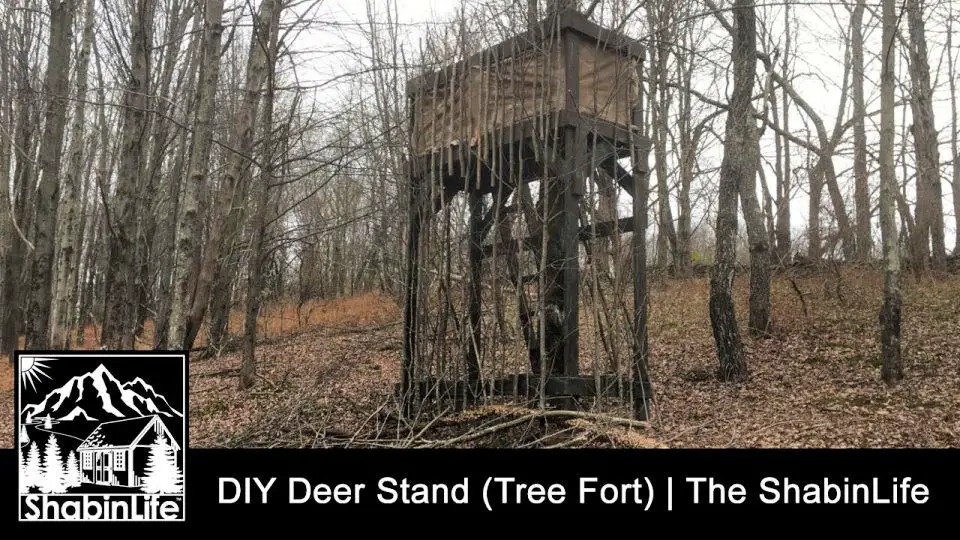
A DIY deer blind can significantly enhance your hunting experience, offering unparalleled success. To embark on this self-sustainable journey, follow these detailed and practical plans to construct a unique elevated deer stand that will seamlessly integrate with your homesteading adventure. This tutorial provides a step-by-step guide to building a functional 4×8 elevated deer stand or hunting blind, empowering anyone to transform their woodland spaces with minimal equipment and a willingness to DIY.
As you utilize your 18-acre land, you’ll not only inspire others to adopt simple and sustainable lifestyles but also turn dreams into reality. Every step of the process, from suburban life to rural homesteading, is filled with valuable insights and wholesome experiences that will foster a deeper connection with nature and stir the innate human desire for simplicity and sustainability.
This tutorial goes beyond just guiding you in making a deer stand; it encourages a more profound appreciation for the natural world and sparks a passion for living simply. Start your adventure today by building your own deer stand and take the first step towards embracing a self-sustainable lifestyle that harmonizes with nature.
DIY Gaint Deer Hunting Blind With Scrap Wood
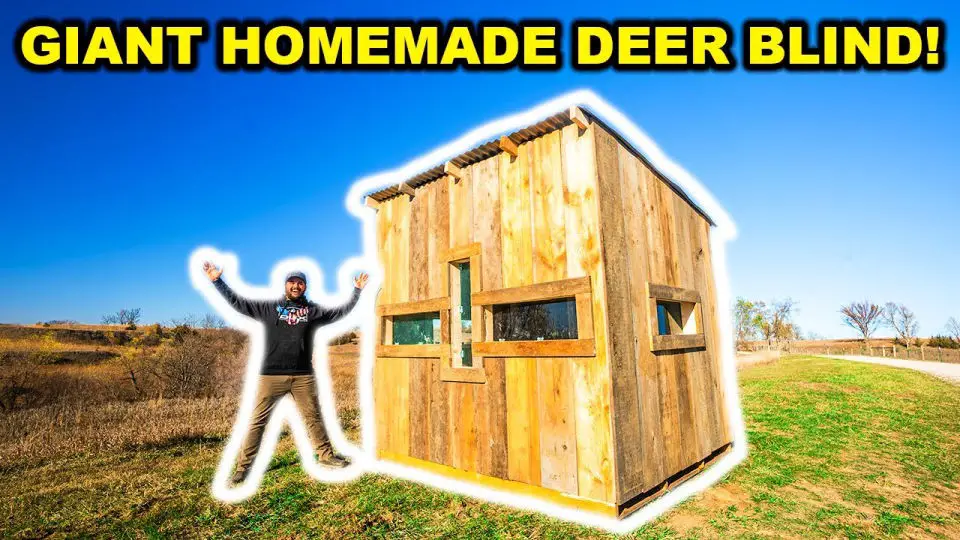
Embark on an eco-friendly adventure by transforming scrap wood into a functional deer hunting blind. This comprehensive guide will walk you through the process of building a sturdy structure using reclaimed materials, perfect for outdoor enthusiasts looking to combine creativity with resourcefulness. With basic tools and equipment at your disposal, including hammers, saws, screws, and scraps of wood, you’ll be well-equipped to prepare the site and construct the blind. By repurposing waste materials, this project not only reduces waste but also encourages a deeper connection with nature. As you navigate the step-by-step instructions, you’ll find yourself not only building a practical hunting blind but also cultivating a sense of accomplishment and pride in your DIY creation.
Homemade 7×7 Deer Stand

Get ready to take your hunting skills to the next level with a comprehensive guide on building a 7×7 deer stand that’s both practical and comfortable. This DIY project is designed to provide a sturdy shooting box blind, perfect for effective deer hunting. With this detailed walkthrough, you’ll gain valuable insights into constructing a reliable 7×7 blind atop a deer stand platform, all achievable within a remarkable 3-day timeframe. By following this well-explained guide, you’ll not only enhance your outdoor adventures but also foster your passion for hunting from an elevated perspective.
DIY 2×4 Deer Stand With Box Blind

Building a DIY deer blind can be a thrilling project that allows you to craft your own hunting hideout. To help you get started, here’s a step-by-step guide to creating a 2×4 deer stand with box blind. Perched at 17 feet high, this structure offers an unobstructed view of the surrounding area while keeping you concealed from wildlife. The construction process is surprisingly straightforward, requiring materials like Ondura Premium Panels for added concealment and tools such as Counter Sink Bit, Better Vue Screen, and Kreg Forman to name a few. One of the unique features of this stand is its optional blind and roof, which can significantly enhance your hunting experience. With these DIY deer blind plans, you’ll be well on your way to building a functional and effective hideout that will serve you well during deer season.
Cheap DIY Deer Stand in 10 Easy Steps
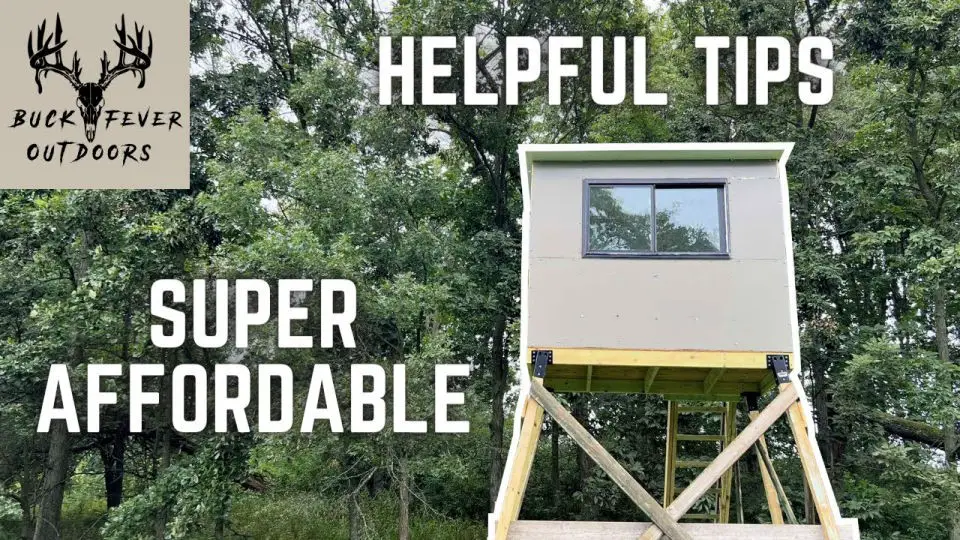
Transform your hunting experience with a cost-effective DIY deer stand that’s uniquely yours! By following a straightforward, 10-step approach, you’ll create a sturdy, scent-free structure tailored to your specific needs without breaking the bank. This customizable guide will have you building your hunting tower using durable wood, common tools, and expert tips. As you elevate your outdoor adventures from your very own creation, you’ll relish the added satisfaction of having crafted something with your own hands. Not only will this project save you money, but it will also hone a valuable skill that’ll serve you well across many hunting seasons. Start building your affordable deer stand today and get ready to experience hunting in a whole new way!
Simple DIY Deer Blind on a Budget
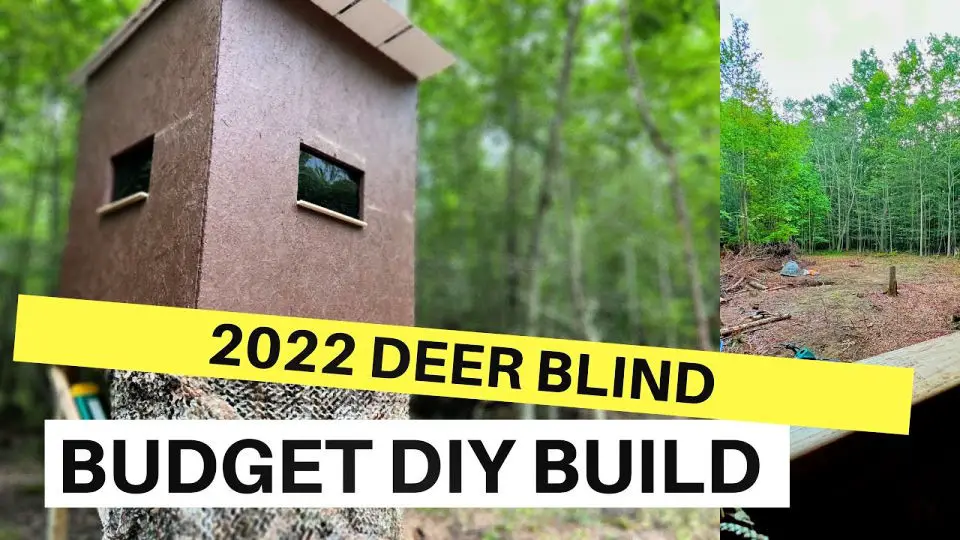
For outdoor enthusiasts on a limited budget, building a DIY deer blind can be a game-changer. With some careful planning and an investment of around $500, you can construct a robust 6×6 structure featuring a 7-foot roof and a unique trap door entry elevated six feet off the ground. This cost-effective solution is perfect for those struggling with high wood costs yet seeking to enjoy the benefits of a top-notch deer blind.
This project yields a sturdy, financially feasible structure that meets both your vision and satisfaction. In the coming season, look forward to detailed plans available for free download, which will provide clear instructions for an optimized build process. Be sure to follow along and start preparing for your own elevated box blind project.
DIY Custom Deer Blind
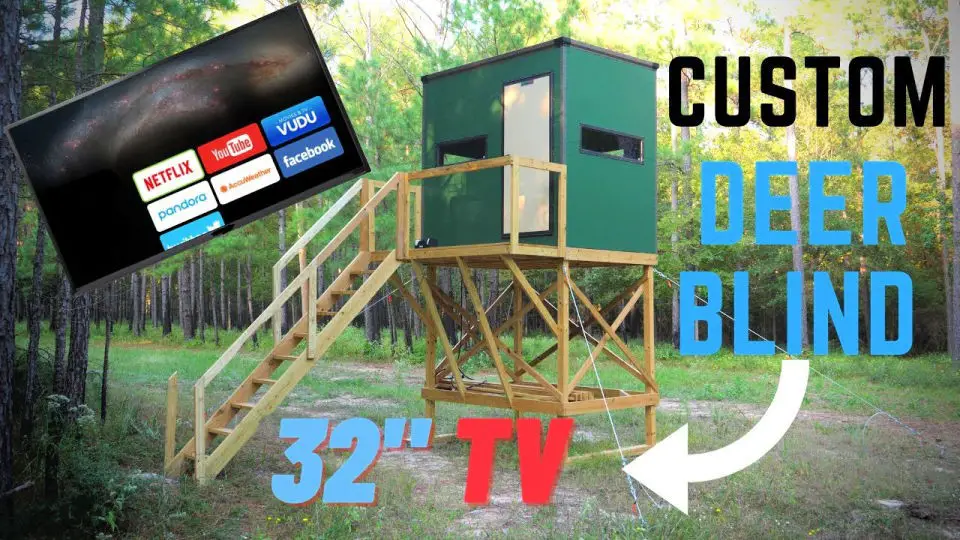
Elevate your hunting experience by constructing a one-of-a-kind custom DIY deer blind that combines the thrill of the wilderness with the comforts of home. This unique project incorporates advanced features like a 32-inch television and 10,000 BTU heater to create an optimal hunting hub. The required materials include a ProCom MG10TBF 10,000 BTU Heater, a 32-inch TV, assorted screws, an air fan, a flush mount, and other essential components. With careful planning and execution, you’ll build a deer blind that offers a commanding view and maintains a comfortable environment during prolonged hunting sessions. This innovative project harmonizes the excitement of hunting with the luxuries of home, resulting in a distinctive approach to outdoor pursuits. A straightforward, step-by-step guide ensures this impressive deer blind is easy to build and rewarding to use, providing an unparalleled hunting experience.
Build Your Own Shooting House
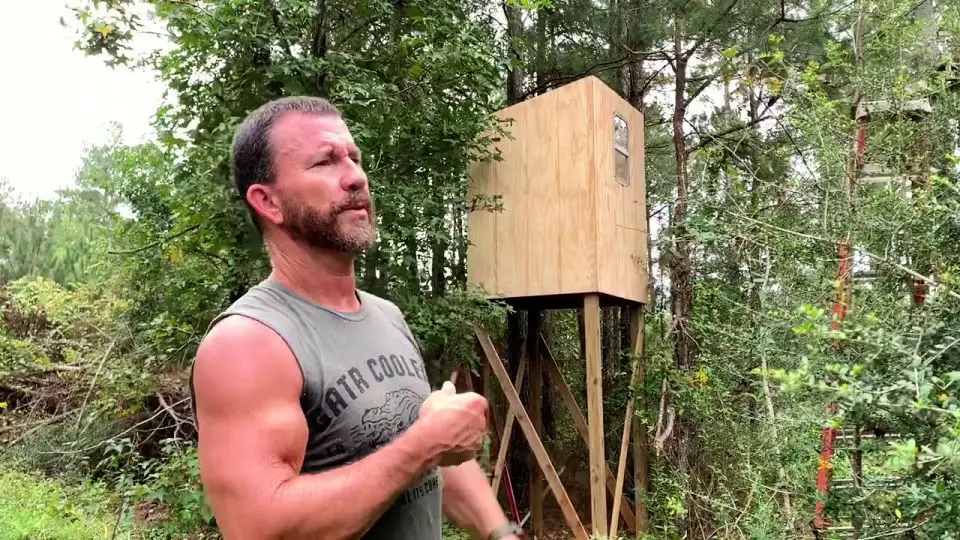
Discover how to craft a low-cost, high-performance box blind for deer hunting with a step-by-step DIY guide that’s perfect for preparing for the upcoming season. This innovative structure is built using readily available materials, making it an affordable and practical solution. With minimal tools and some basic handiwork, you’ll be able to create a sturdy and comfortable shooting house that will elevate your hunting experience. Despite its simplicity, this box blind design offers exceptional value, providing comfort, convenience, and a significant edge in your deer hunting endeavors. Take the first step towards a successful season by building this cost-effective and user-friendly box blind today.
Building a 6×8 Octagonal Elevated Box Deer Blind
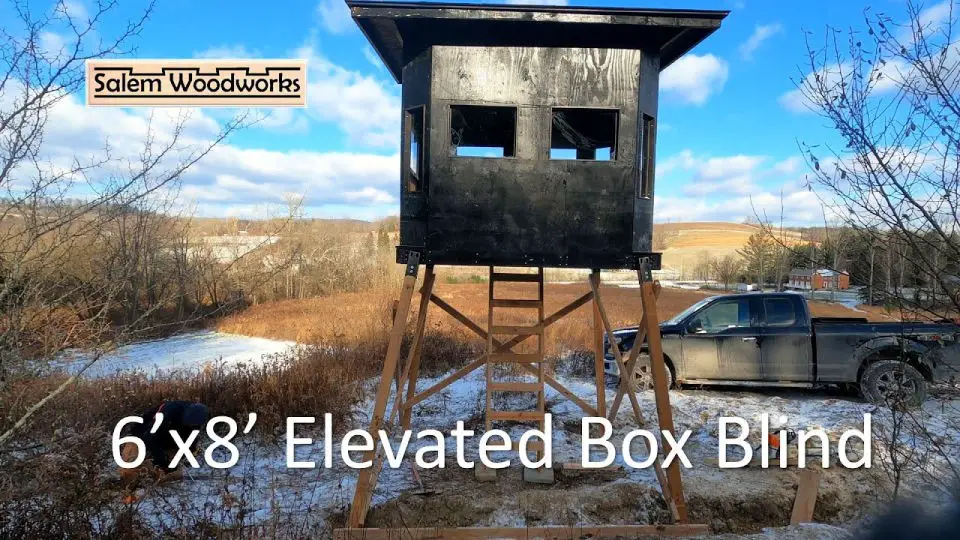
Elevate your hunting experience with a custom-built 6×8 octagonal elevated box blind designed for two adults. This spacious hideout boasts strategic visibility, comfort, and a unique trap door entry for a stealthy approach. Optimized sheet goods ensure maximum material utilization and cost-effectiveness, making it an excellent choice for those planning multiple constructions. With its clever design and meticulous craftsmanship, this blind is poised to become your go-to spot for thrilling outdoor adventures. Start building today and take your hunting game to new heights!
Portable DIY Hunting Blind
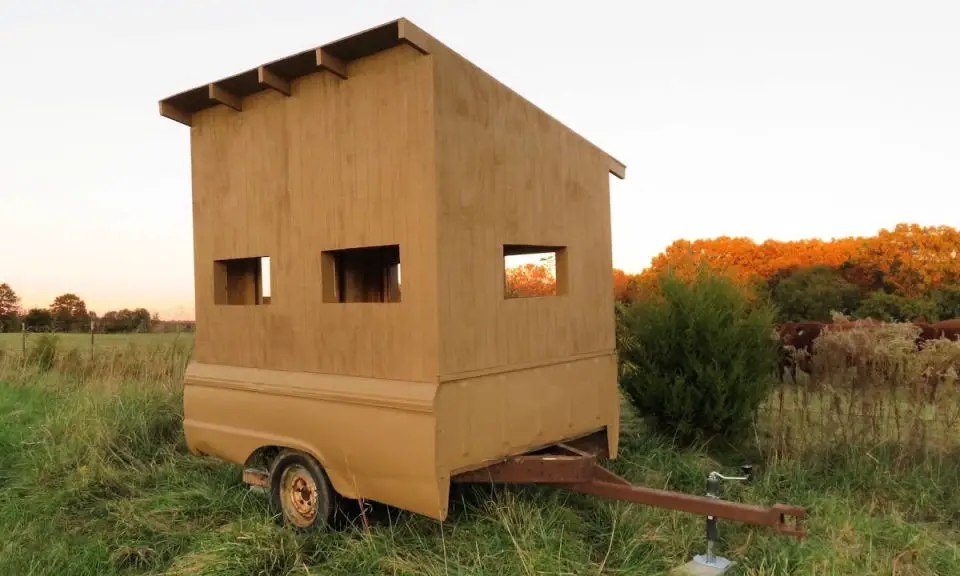
Discover the art of crafting a portable deer blind on a truck bed trailer, as revealed in an extensive DIY tutorial. This ingenious design serves as a catalyst for creative expression, sparking conversations among enthusiasts eager to build their mobile blinds. Beyond the basic structure, this comprehensive guide delves into customization options such as camouflage mesh curtains, gun racks, heater mounts, shelves, and hooks that can be seamlessly integrated to elevate its functionality. As a budget-friendly endeavor, this project presents an invigorating DIY challenge and a tangible application for outdoor enthusiasts seeking to enhance their hunting experiences.
Easy DIY Deer Blind Under $500
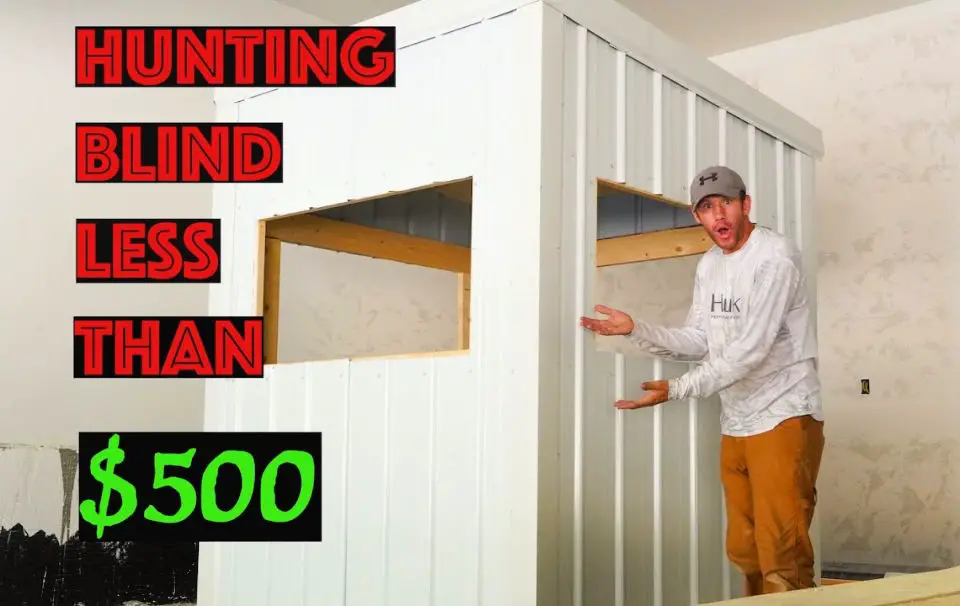
Transform your hunting escapades with a budget-friendly DIY deer blind that won’t break the bank! This self-built structure is not only cost-effective but also surprisingly easy to construct, taking your hunting experience to new heights. With readily available materials like lumber, screws, and roofing supplies, you’ll create a sturdy and dependable haven.To get started, simply measure, cut, and organize your materials in advance. A straightforward construction guide will walk you through the process, ensuring your deer blind stands strong and true. Imagine perched atop your elevated hideaway, seamlessly blending into the surroundings as you wait for the perfect shot.This DIY deer blind excels at combining practicality with comfort, allowing you to hone your hunting skills while enjoying a cozy retreat. Start building today and take your hunting prowess to unprecedented levels – a project that’s both informative and engaging!
Conclusion:
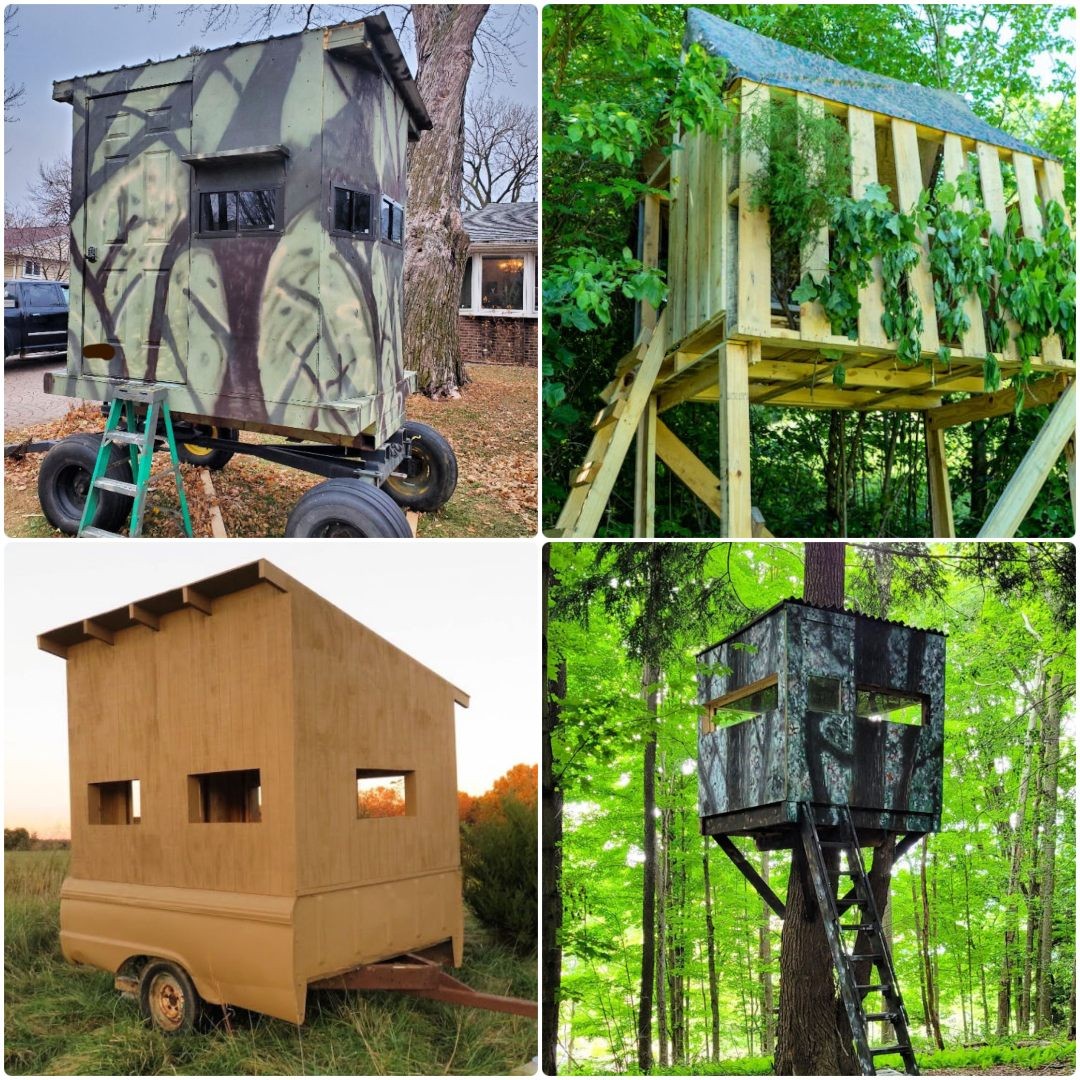
When concluding our collection of 25 DIY deer blind plans for building a safe hunting spot, it’s essential to emphasize the significance of tailoring your structure to suit your specific needs, prioritizing safety above all else, adhering to local regulations, minimizing environmental impact, and regularly maintaining your deer blind. To ensure a successful and enjoyable hunting experience, select camouflage that blends seamlessly with its surroundings, focus on enhancing comfort within the blind, and prioritize safety by carefully considering every design decision. Moreover, it’s crucial to follow hunting regulations, source sustainable materials for construction, and commit to routine upkeep to guarantee the longevity of your deer blind.


